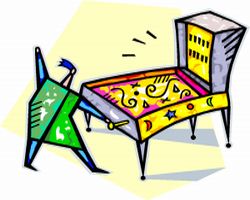 Improvement requires change and change requires learning – so knowing how to guide learning is an essential skill for an improvement scientist.
Improvement requires change and change requires learning – so knowing how to guide learning is an essential skill for an improvement scientist.
There is a common belief that we learn by watching and listening – and therefore that we can teach by showing and talking. This belief is incorrect. We all learn by doing something different and comparing what we perceived with what we predicted. So what prompts us to do something different? The answer is we are nudged.
We learn and change over time as a result of a series of small nudges – the effects of which add up. We can simulate this behaviour easily.
Find a tray and a piece of kitchen paper and draw two circles on the paper. Put the paper on the tray and then put a heap of granulated sugar on the leftmost circle. It will stay where it is placed. Hold the tray horizontal and nudge the tray repeatedly by tapping on its edge with a finger. The heap of sugar will spread out in all directions – and only a small proportion goes to wards the second circle – the intended direction of improvement.
Now repeat the simulation but this time tilt the tray slightly in the direction of improvement so that the heap stays put – and then nudge the tray. The heap of sugar will spread out and more will move in the direction of the second circle – the improvement goal. The nudging is necessary but it is not sufficient – a tilt in the intended direction of improvement is also necessary but not sufficient. Actual improvement requires both.
Life provides a continuous series of random nudges – so in reality all that is needed to improve is to set the direction of tilt – which implies making it easier to move in the direction of improvement than away from it. Setting the direction of tilt is one facet of leadership – and it requires aligning the reward with the improvement. Very often this is not done and improvement becomes an uphill struggle that is unsustainable and unmaintainable.
Even when the reward is aligned with the improvement we cannot guarantee success – there is another factor.
Now repeat the sugar flow simulation and this time create a physical barrier between the heap and the goal – such as a row of sugar cubes or a fold in the kitchen paper. Create a barrier that the tilting and nudging is not strong enough to move. Now the sugar flow will be blocked by the barrier and our temptation is to increase the tilt and apply bigger nudges – but this increase-the-pressure-by-pushing-harder strategy has a risk because when the barrier eventially breaks the backlog of sugar lurches forward in an uncontrolled surge. Uncontrolled impprovement is not what we want.
So the second role of the improvement scientist is to help to remove the barriers – and this requires a more focussed action than a tilt or a nudge. It requires a poke.
Pokes are uncomfortable for the poker and for the pokee – and the skill to master the art of the positive poke. Negative pokes are surprising, emotionally painful and result in an angry reaction which damages the pokee. Positive pokes are surprising, emotionally uncomfortable and result in an excited proaction which develops the pokee.
So now poke the barrier where it crosses the line that joins the two circles so that it is reduced or removed at that point – and then tilt and nudge as before. The backlog of sugar will funnel through the gap in the barrier in a well-focussed stream in the direction of improvement. The barrier actually helps to direct the the flow so a precise poke is necessary.
The effective improvement scientist needs to know how to tilt, when to nudge and where to poke.
